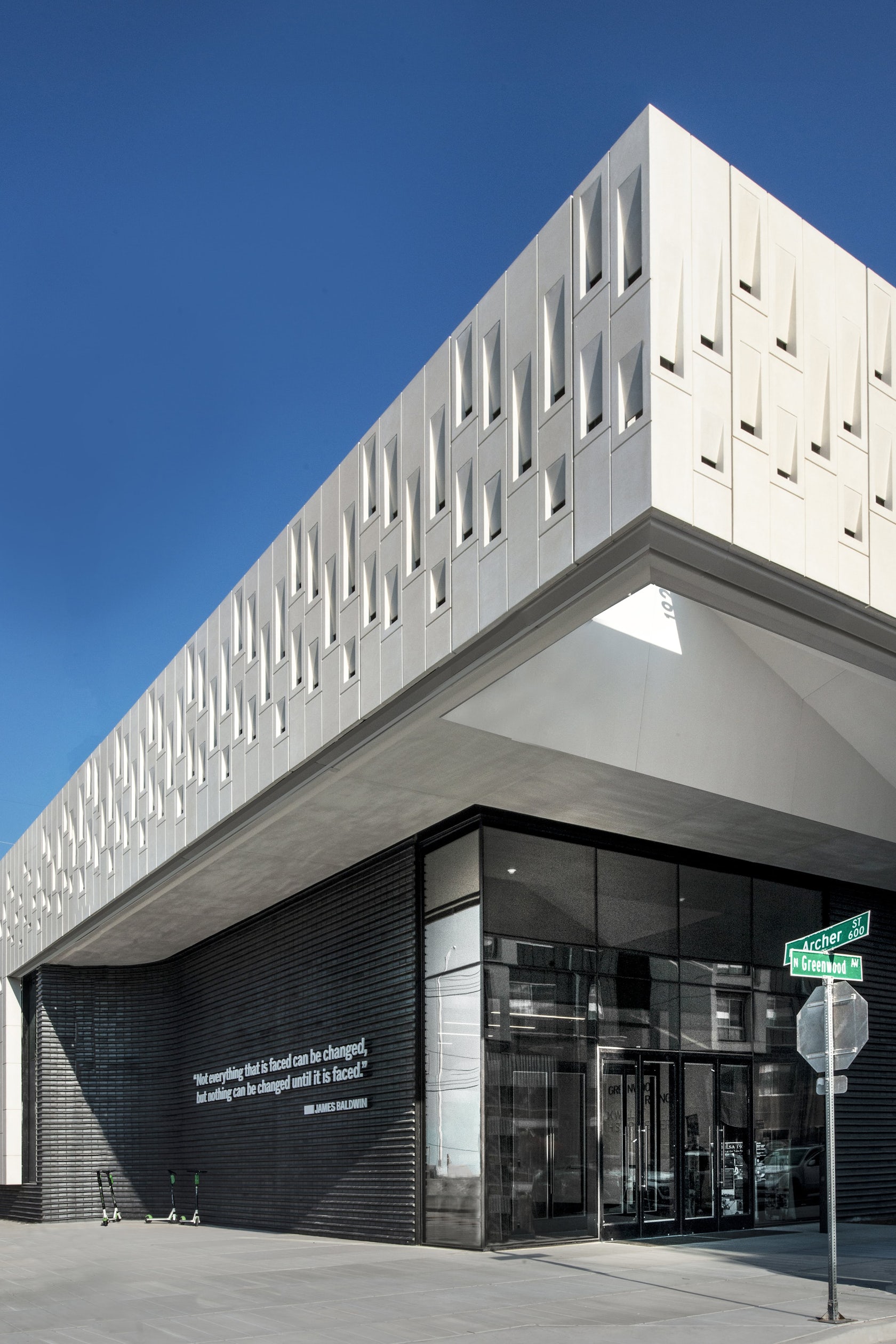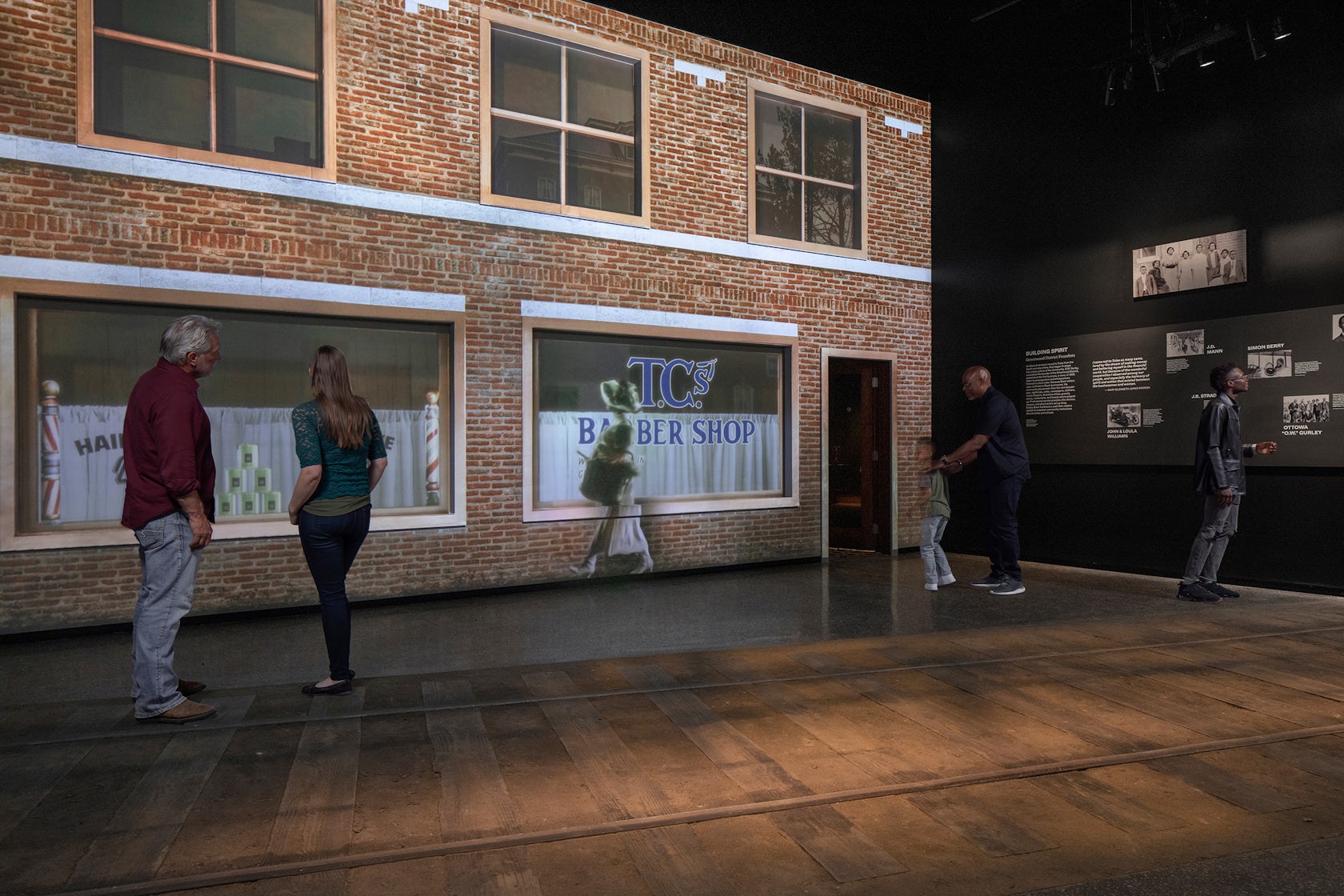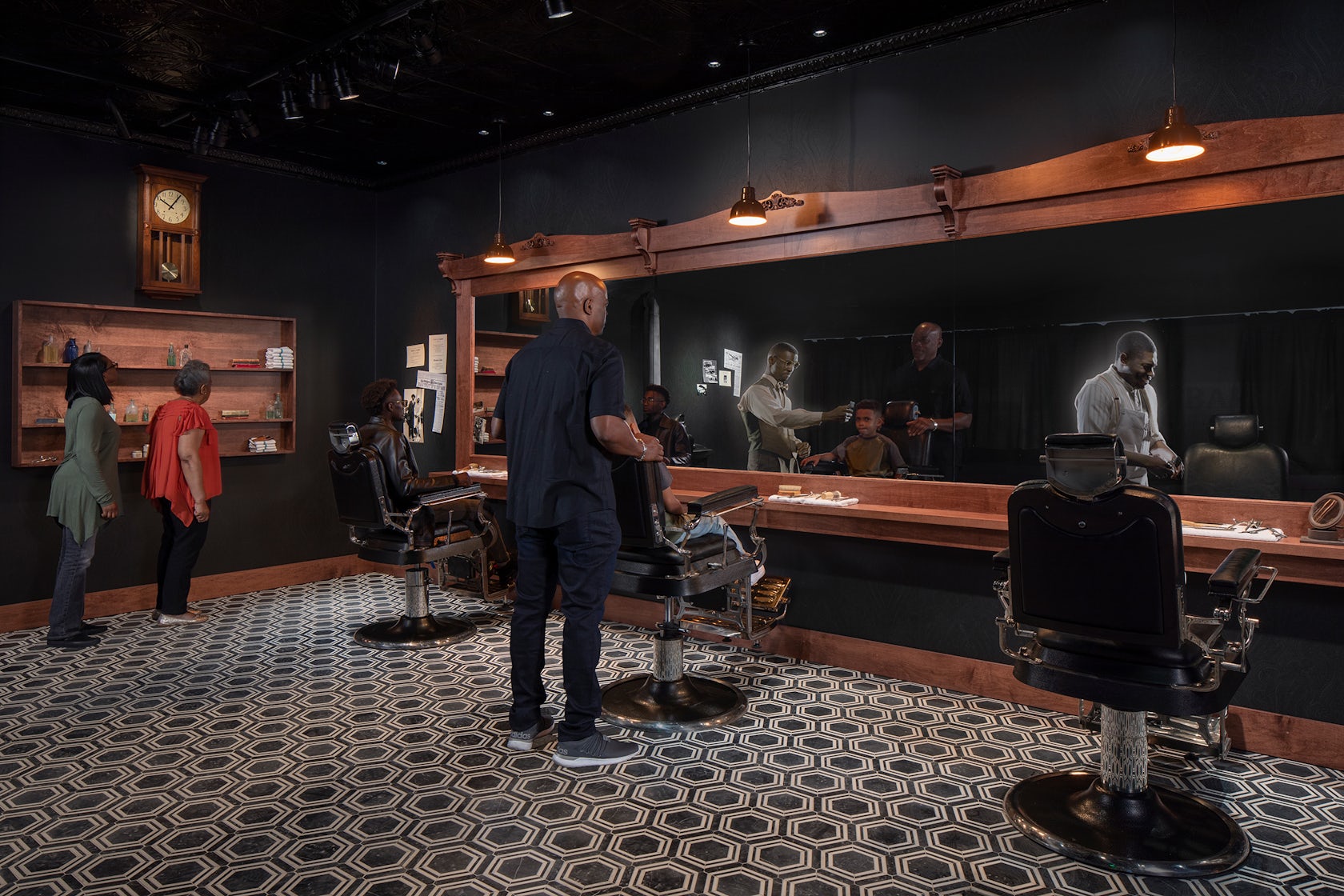Greenwood Rising // Local Projects
Text description provided by the architects.
In 1921, a mob of white Tulsans destroyed the Historic Greenwood District known as Black Wall Street, killing and injuring thousands. Our task? To share the truth about a domestic terrorist attack whose history has been surpressed, tell the story of the ingenious community that survived, and empower visitors to heal and take action toward an equitable future.

© Local Projects
Greenwood Rising accomplishes four goals within it’s 10,000 sq foot of exhibition space: The Spirit of Greenwood, synthesizes 100 years of history into a cinematic, emotional narrative. Visitors are invited to become a part of the Historic Greenwood District, meeting early founders, learning of their hopes and dreams, and sharing in the communal pride of a place filled with culture and entrepreneurship.

© Local Projects
The Arc of Oppression describes the systemic social, economic, and political oppression leading up to the 1921 Tulsa Race Massacre, before immersing visitors in the horrors of the event itself. This truth-telling helps the victims to rest in peace, the community to further heal, and the nation to reckon with the legacy of its historical racial trauma..

© Local Projects
Changing Fortunes covers the 80 years of history post-massacre, including the miraculous rebuilding and expansion of the Greenwood District and the ups and downs it faced with the continued systemic oppression and targeted terror of the twentieth century. Journey Toward Reconciliation empowers visitors to reflect on their experience and discuss how to dismantle systems of anti-Blackness, ending with a call for concrete commitments of future action, realizing the Museum’s goal for visitors to play an active role in truth-telling and healing.

© Local Projects
Since opening to the public last August, the museum has hosted over 32,219 visitors, received hundreds of thousands of online visitors, maintained six active community programs surrounding Greenwood’s history and the Tulsa community, and received 5,060 commitments to racial reconciliation from individuals around the world. Since the Museum’s opening, curriculum about the Tulsa Race Massacre has also been developed in Oklahoma schools across the city and state.

© Local Projects
Among numerous awards, Greenwood Rising has been honored with Best Design in North America by Fast Company, and received rave reviews from the press, including the New York Times’ Holland Cotter: “Museums are valuable to the extent they link the past to the present and illuminate both. In Greenwood Rising, the links are made overt and we’re urged to ponder them, to recognize that the white-on-Black violence of 1921 is still with us, and that Black disenfranchisement, like racism, remains entrenched.”
.

© Local Projects
Greenwood Rising Gallery


